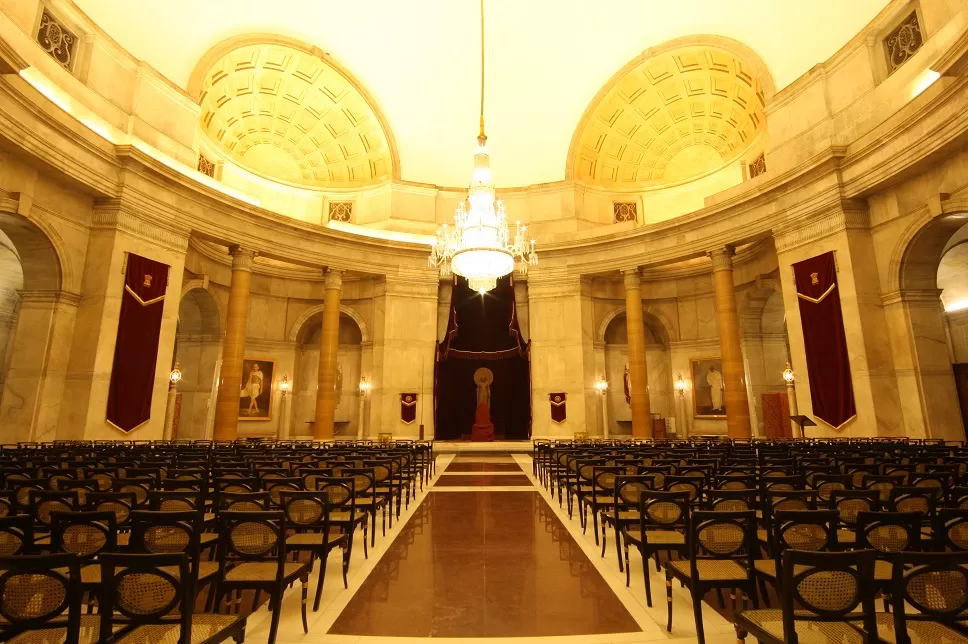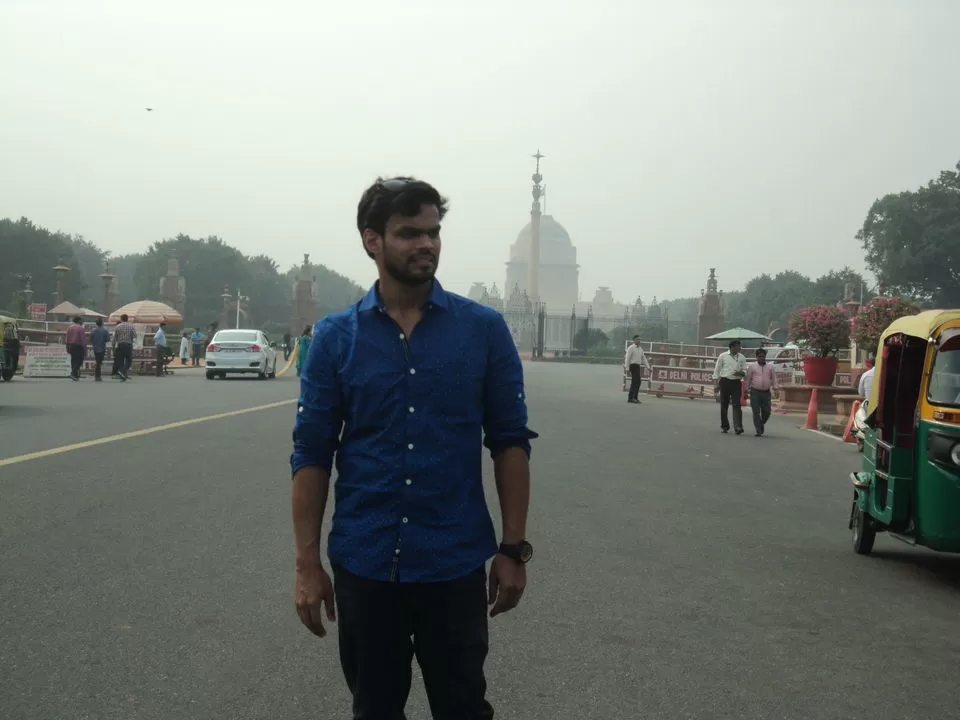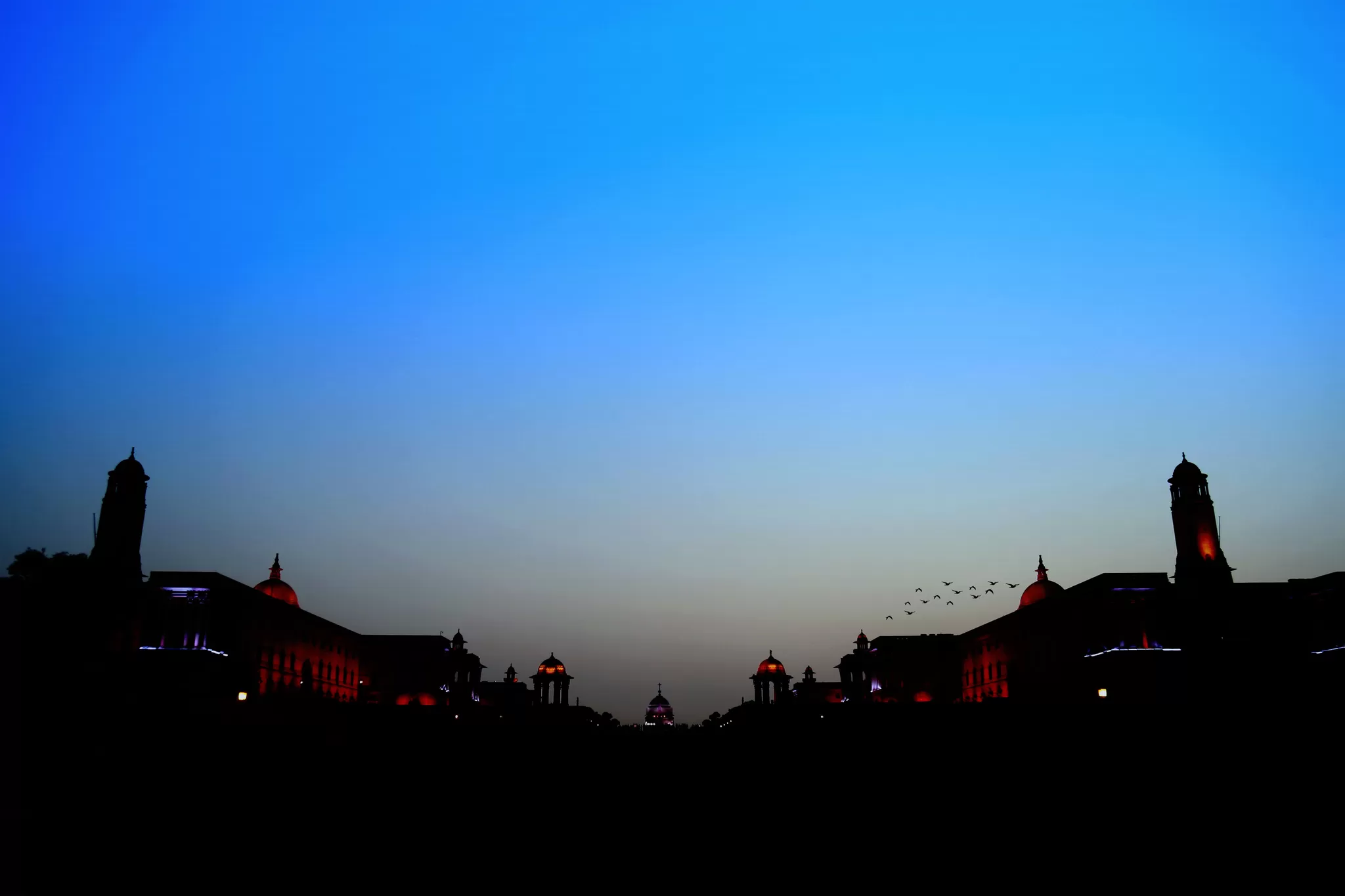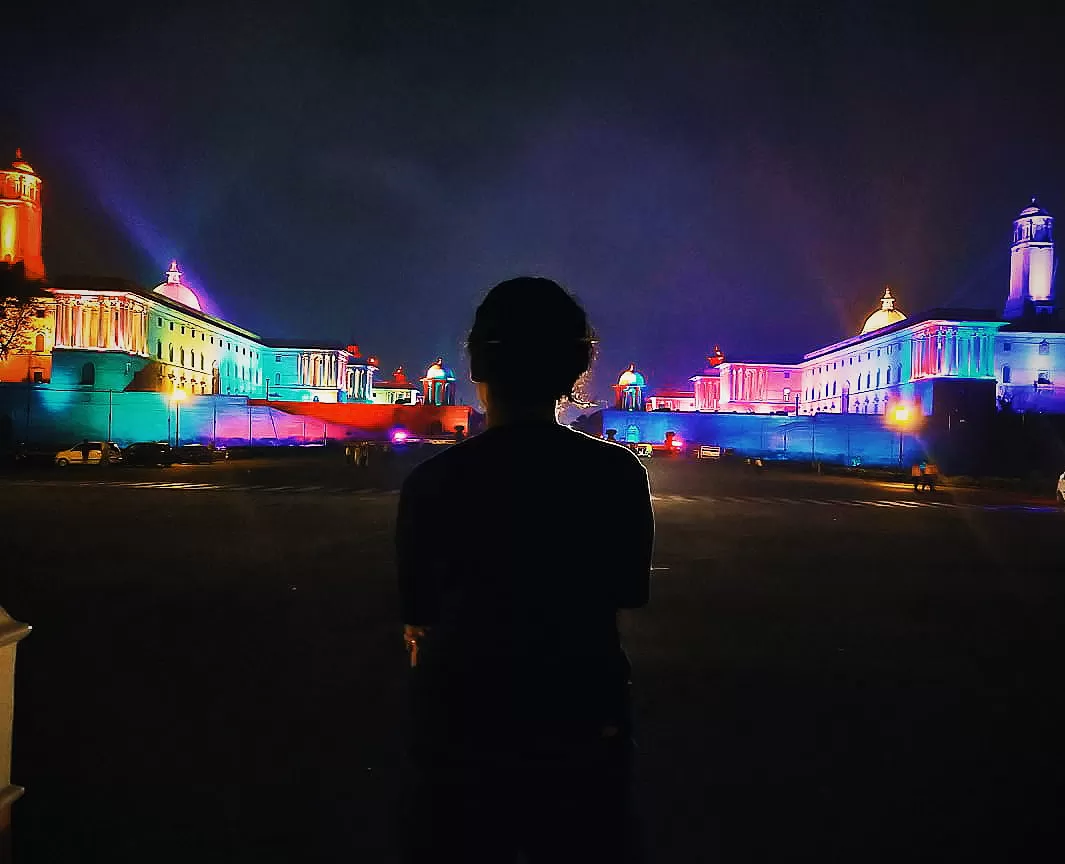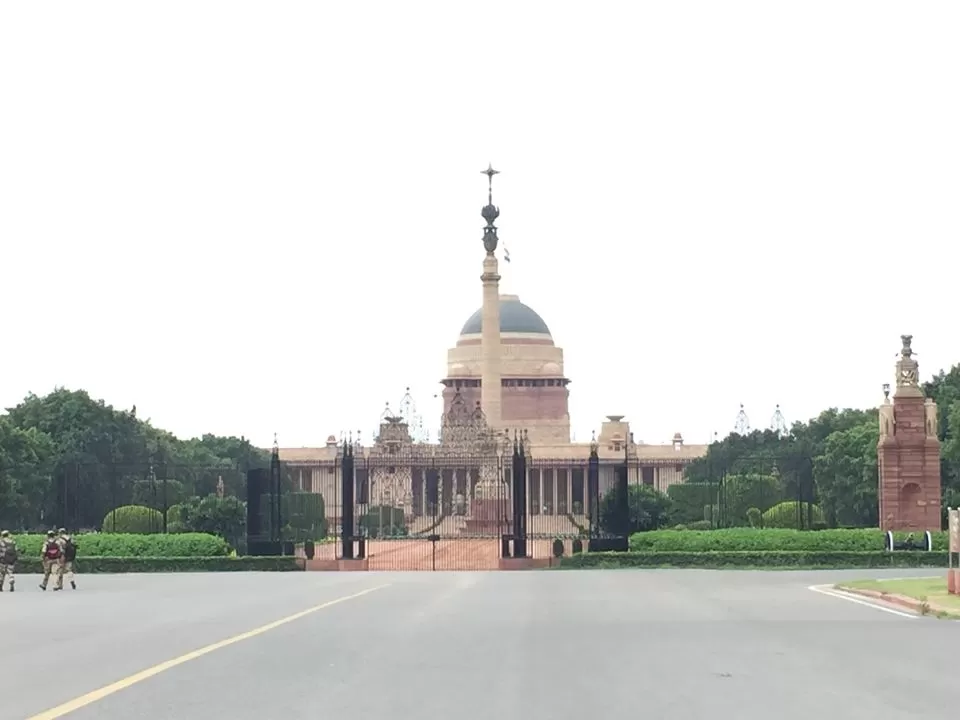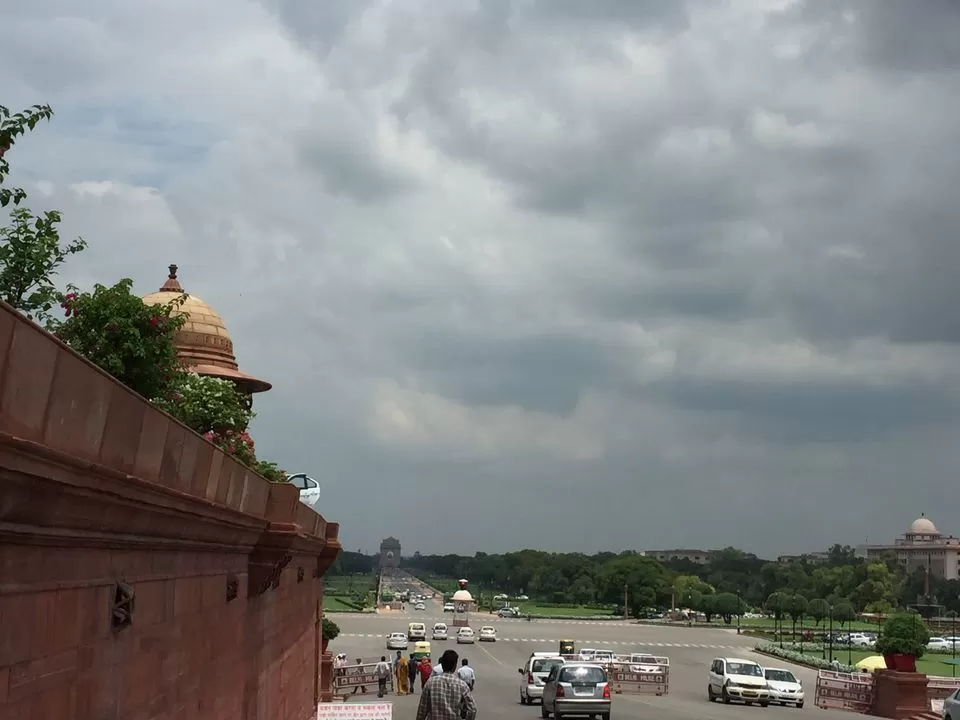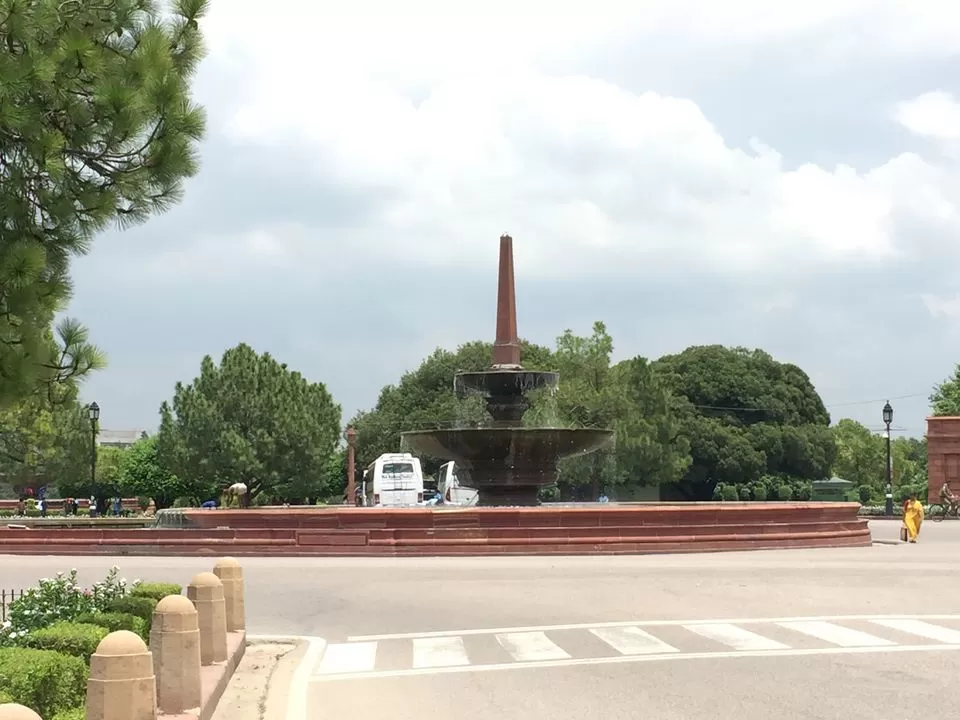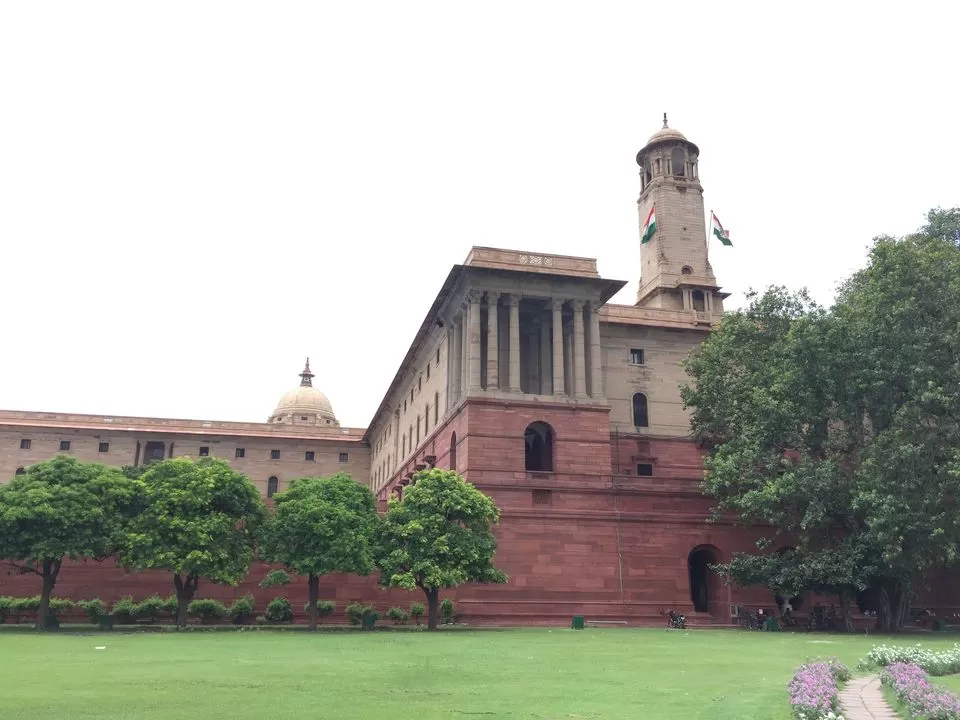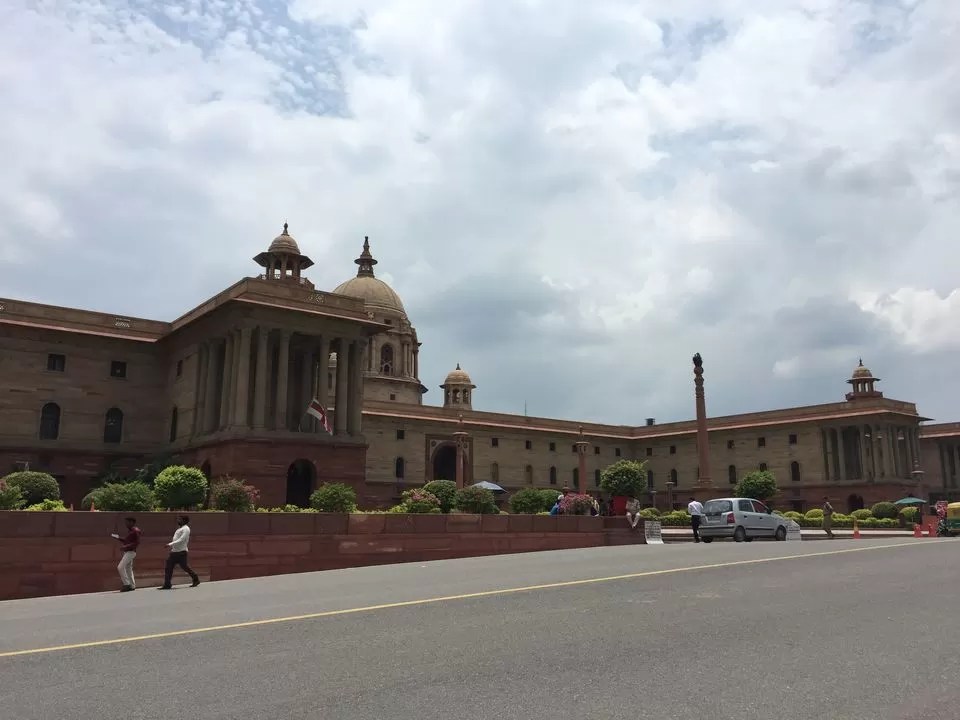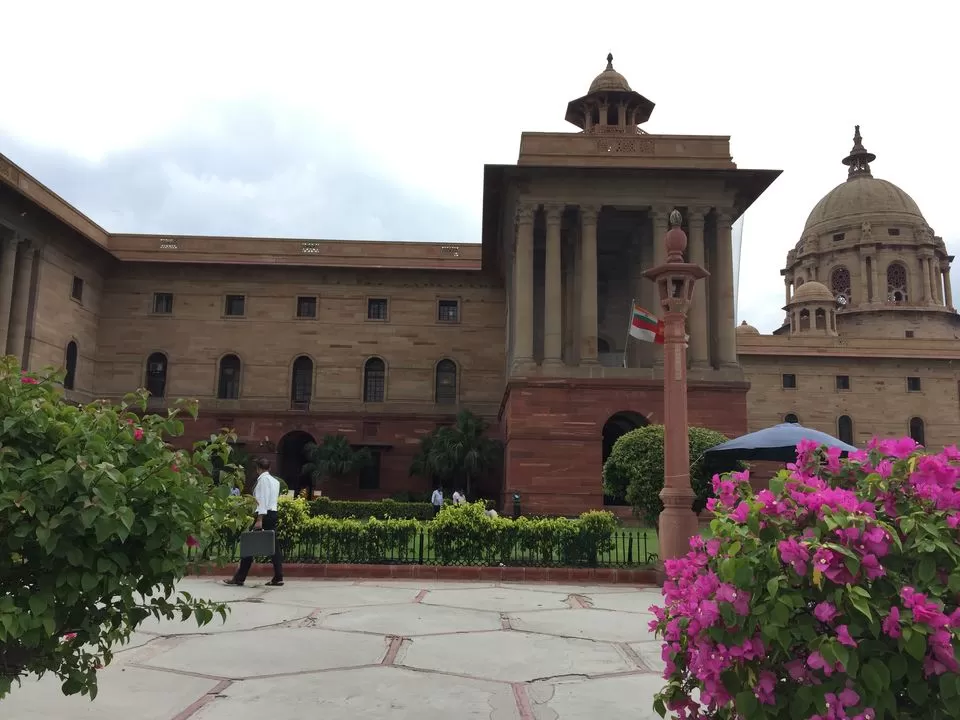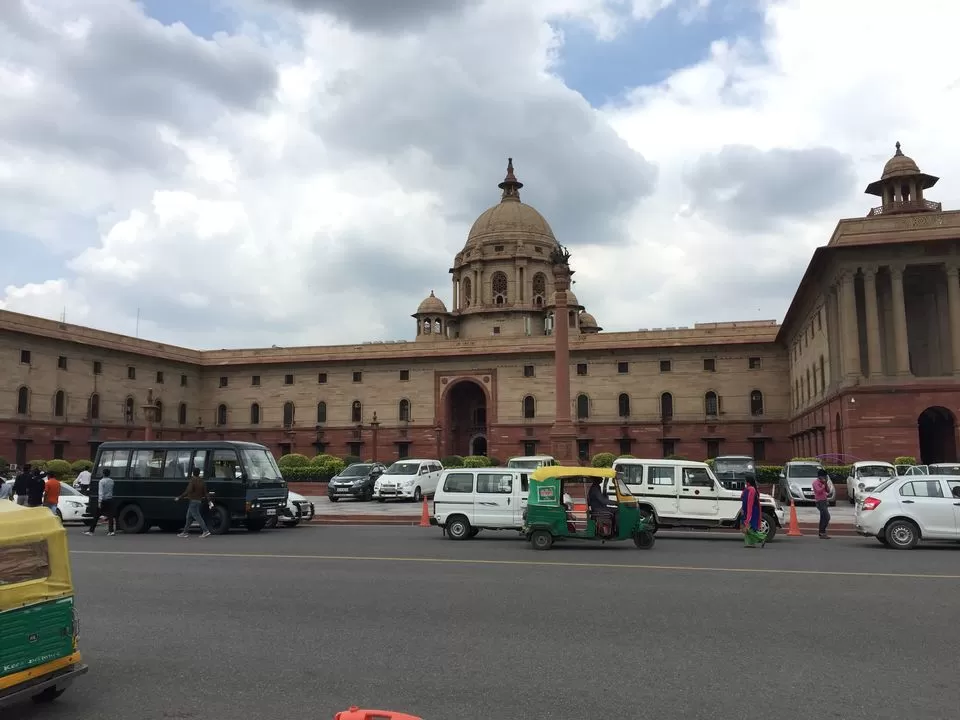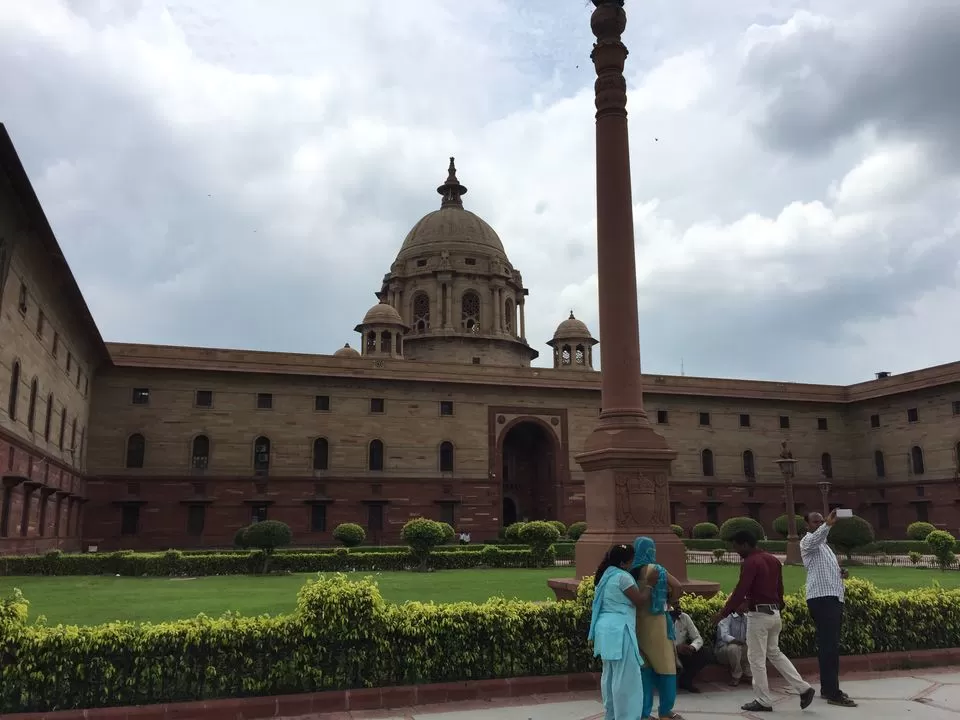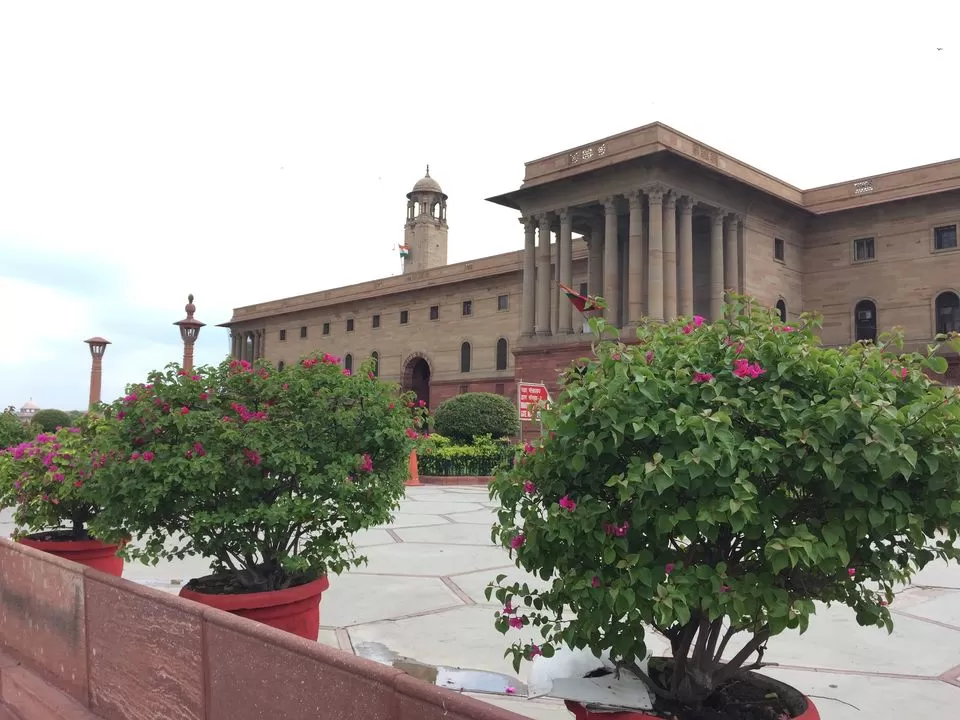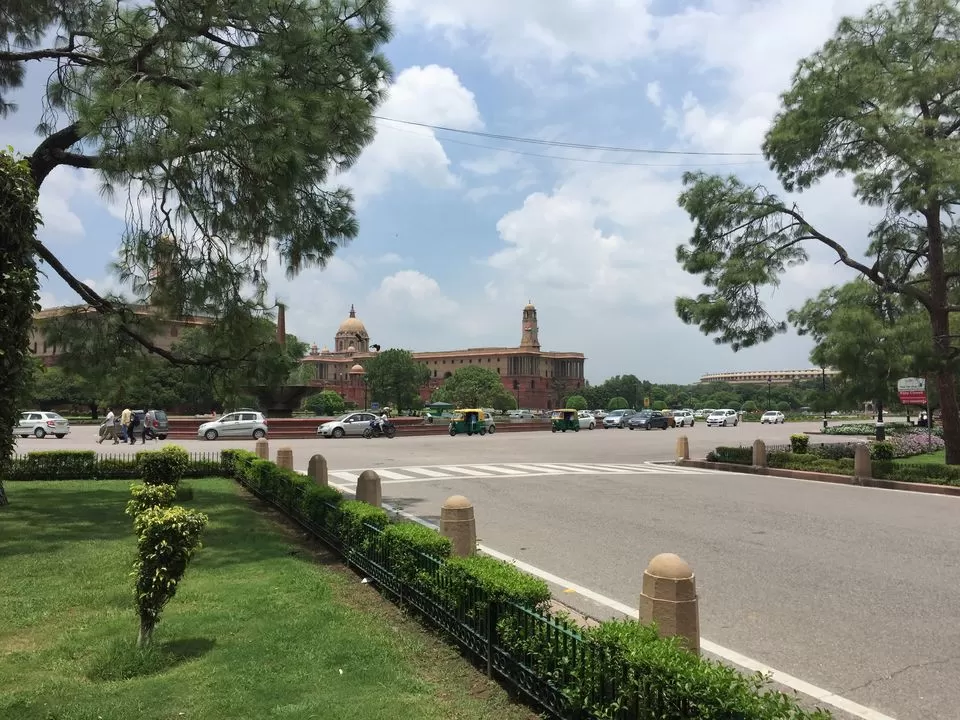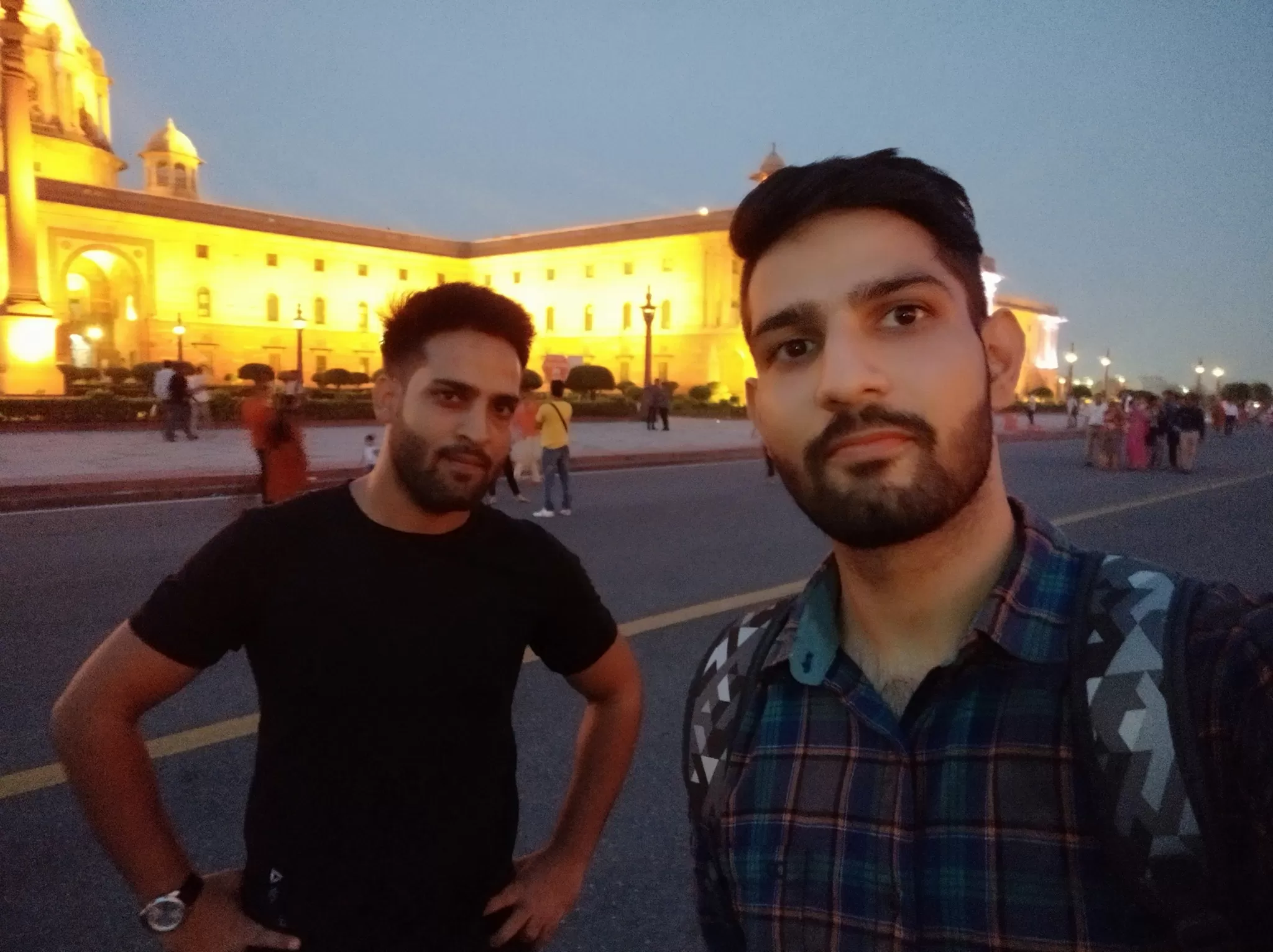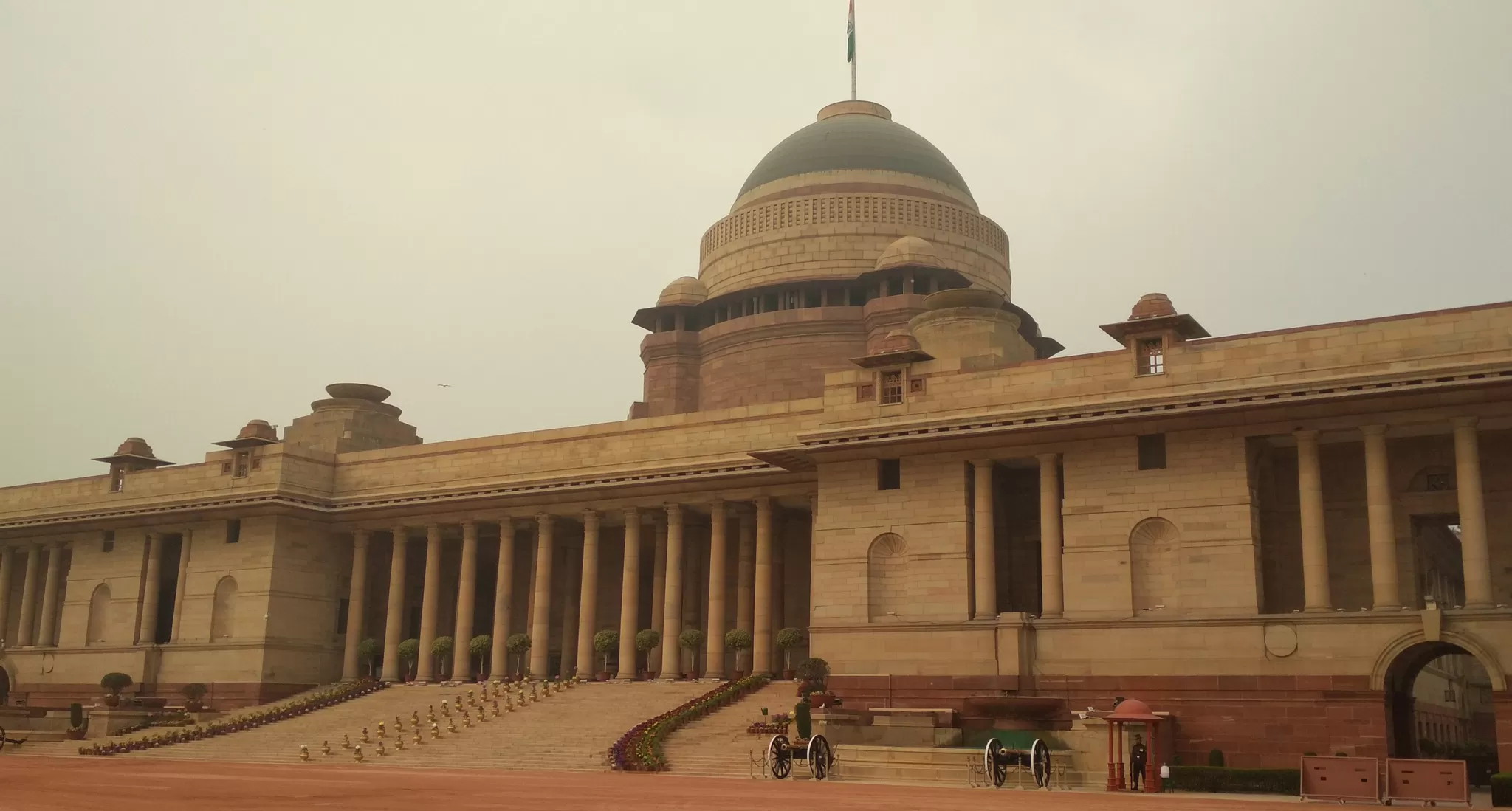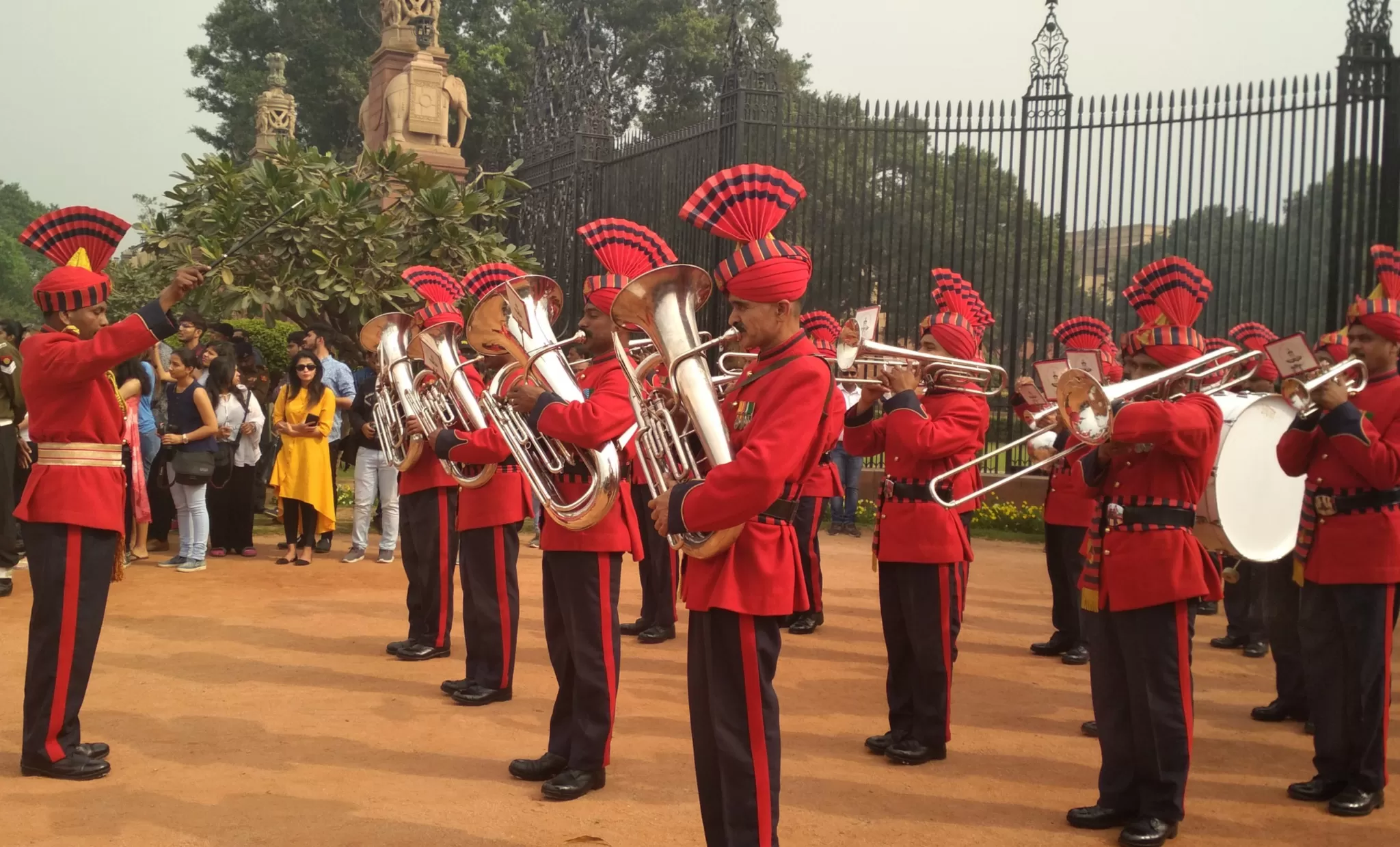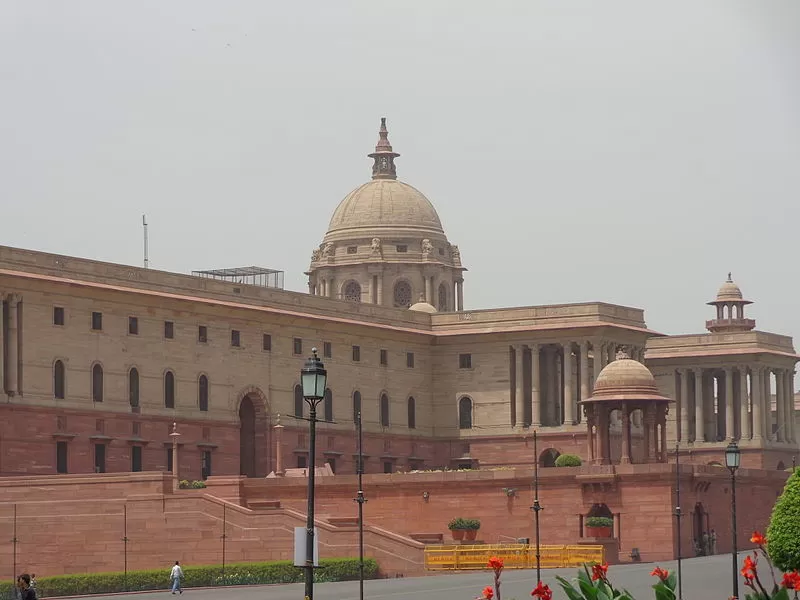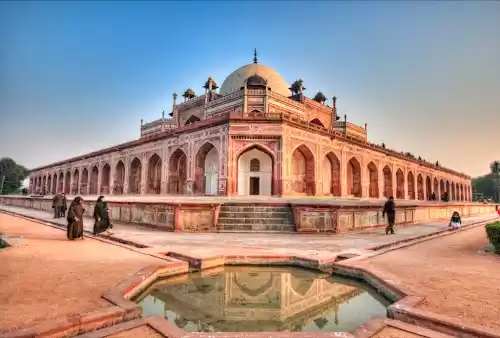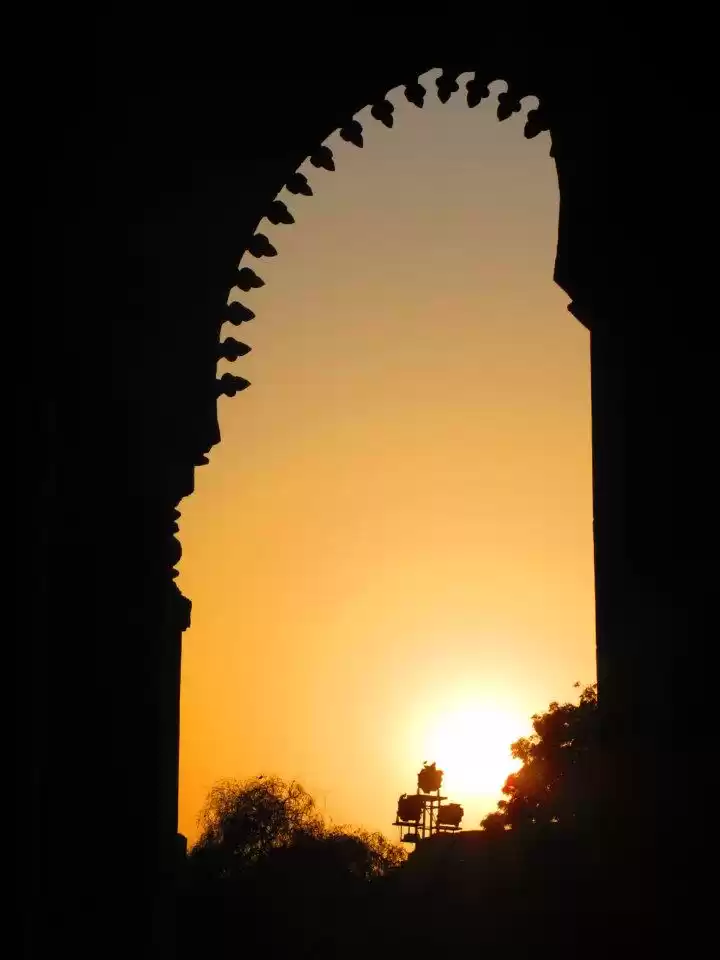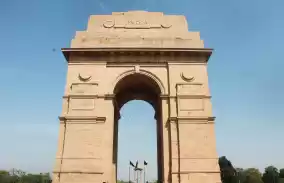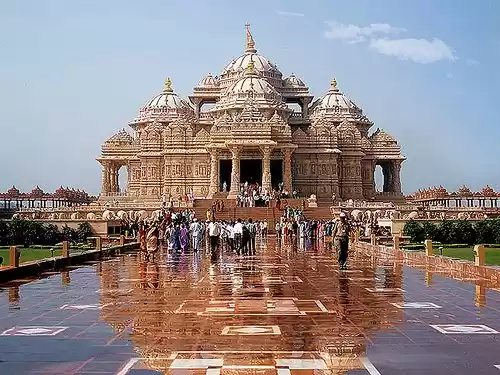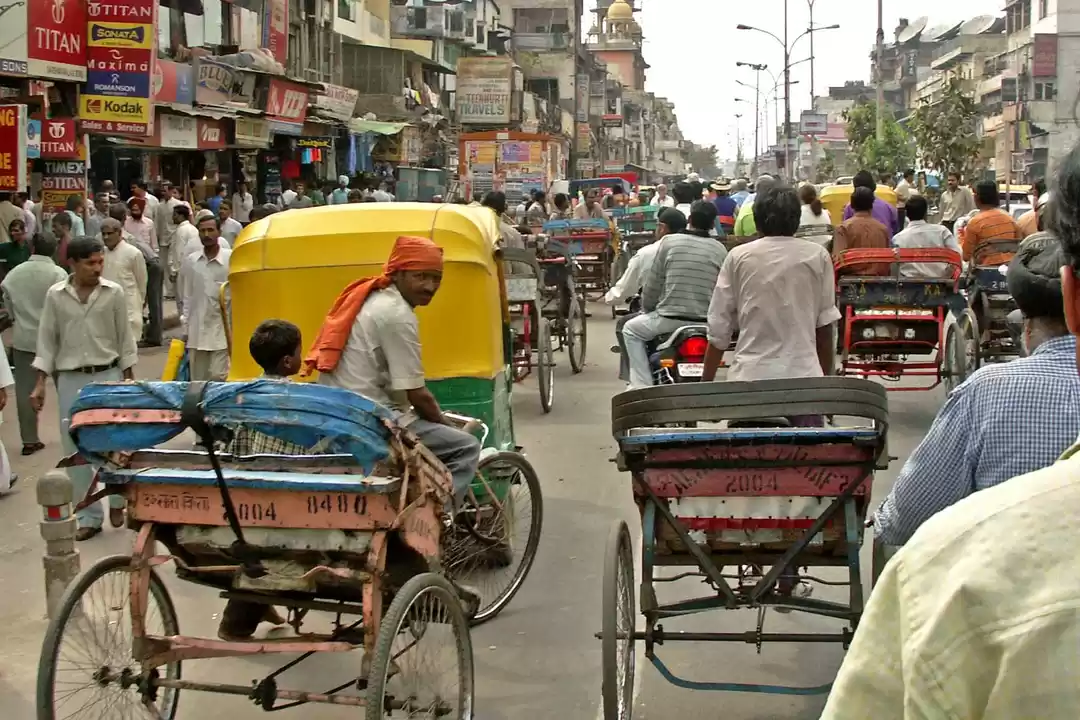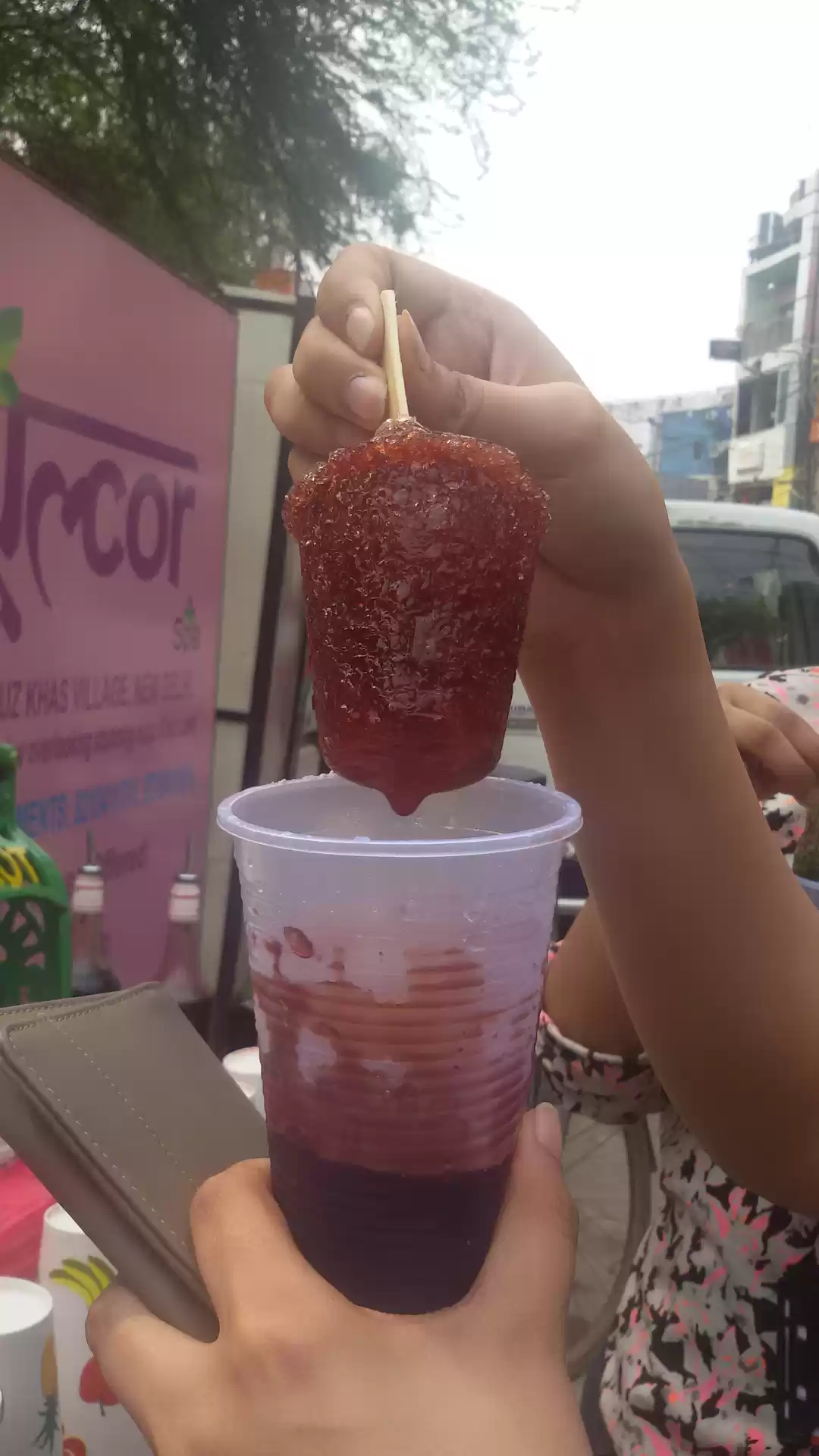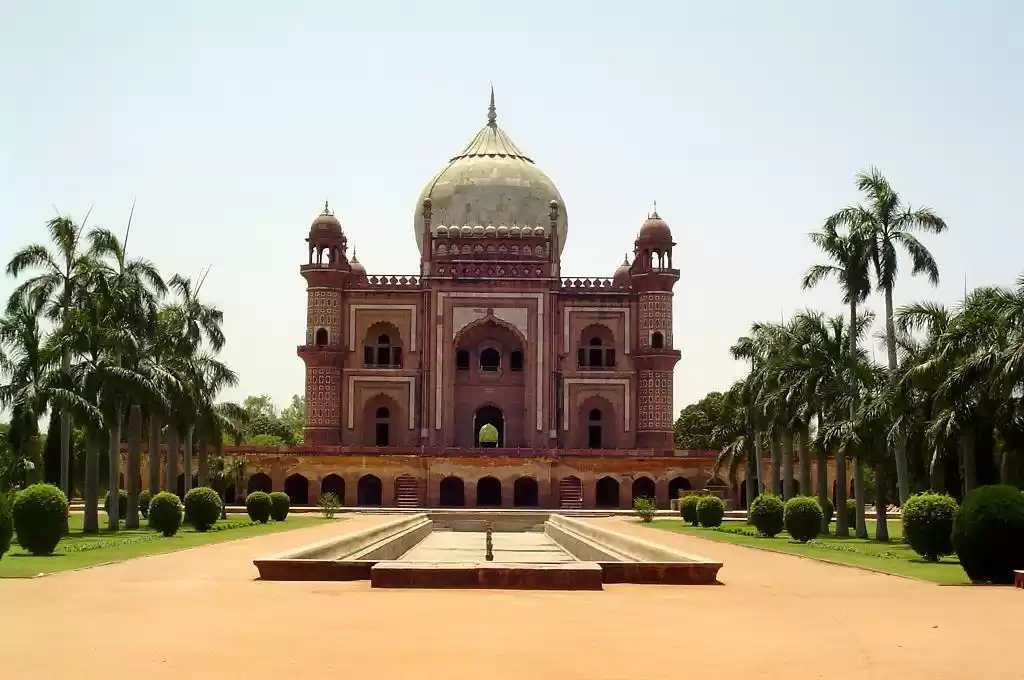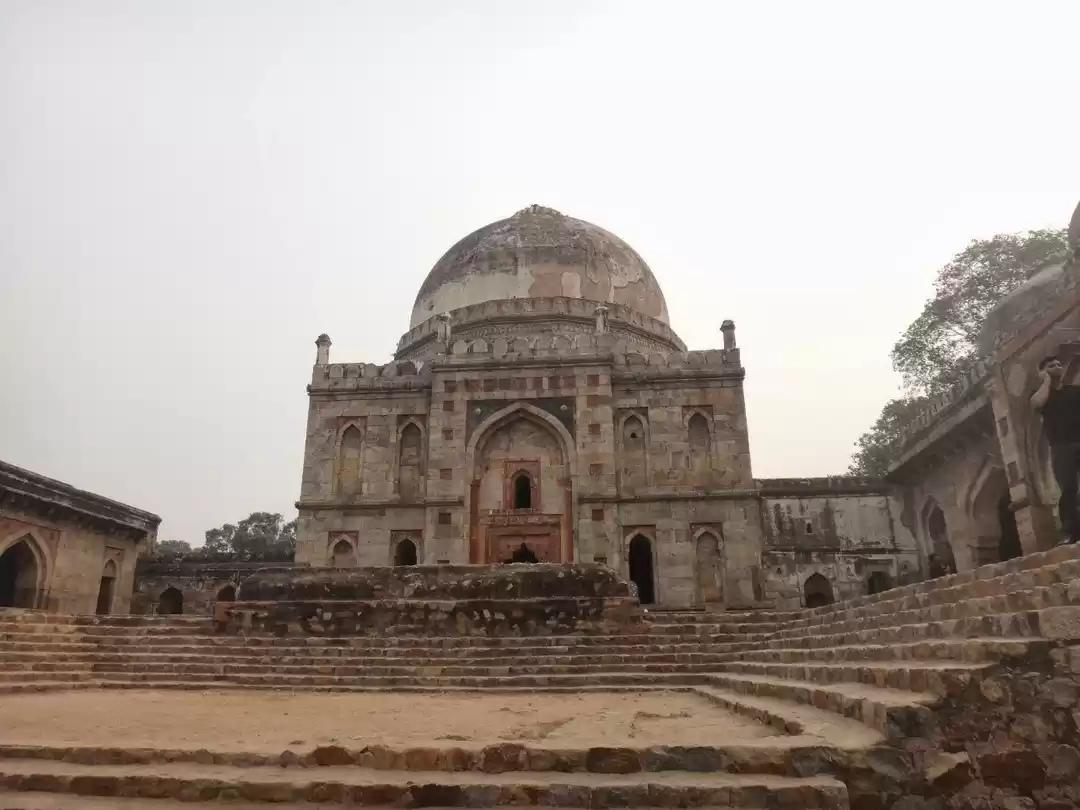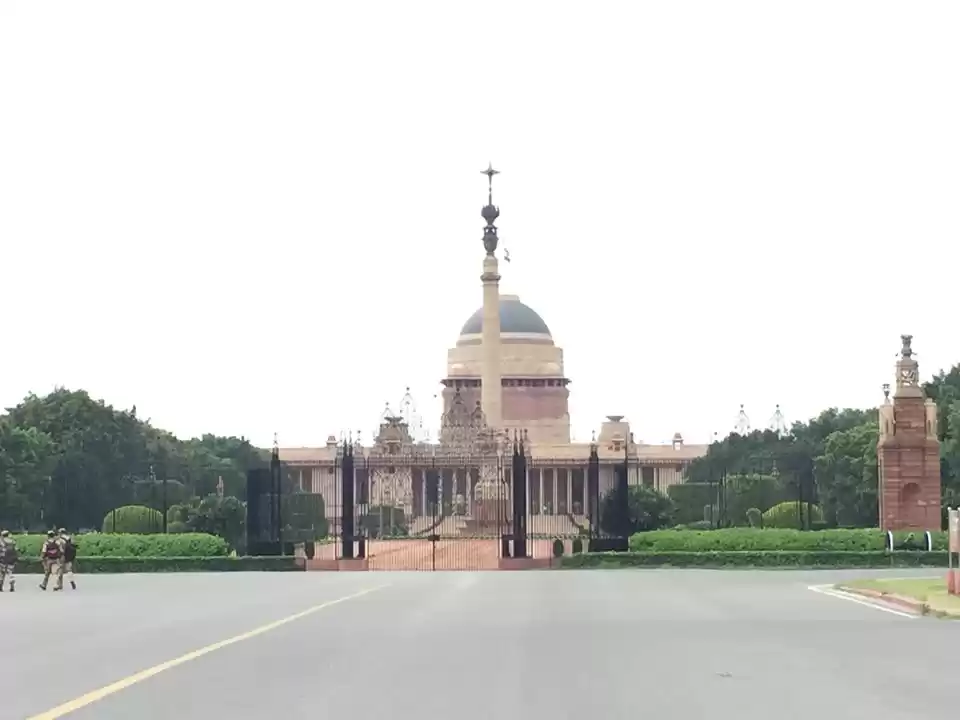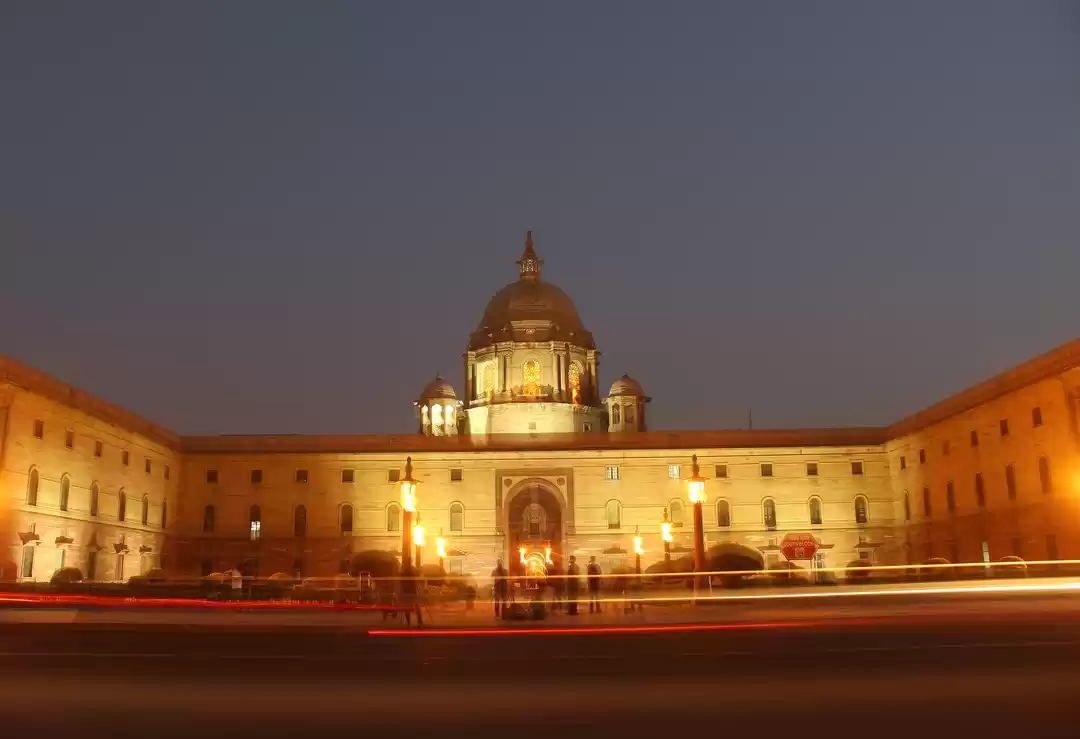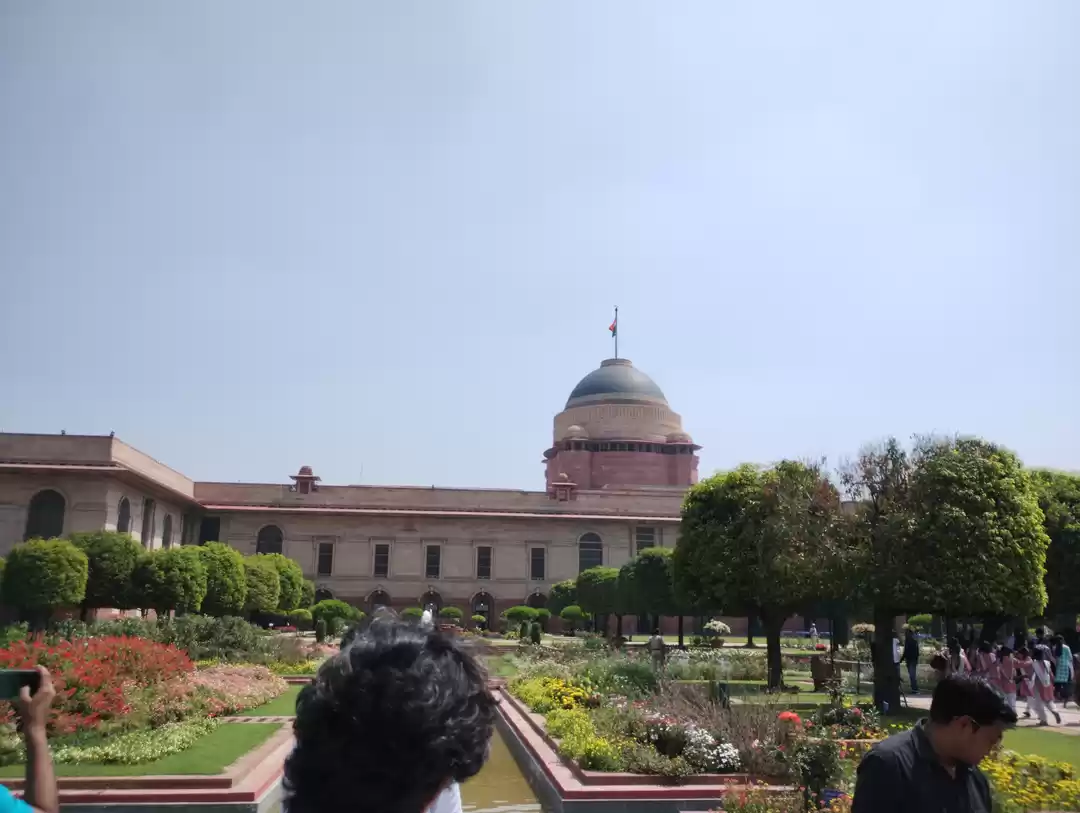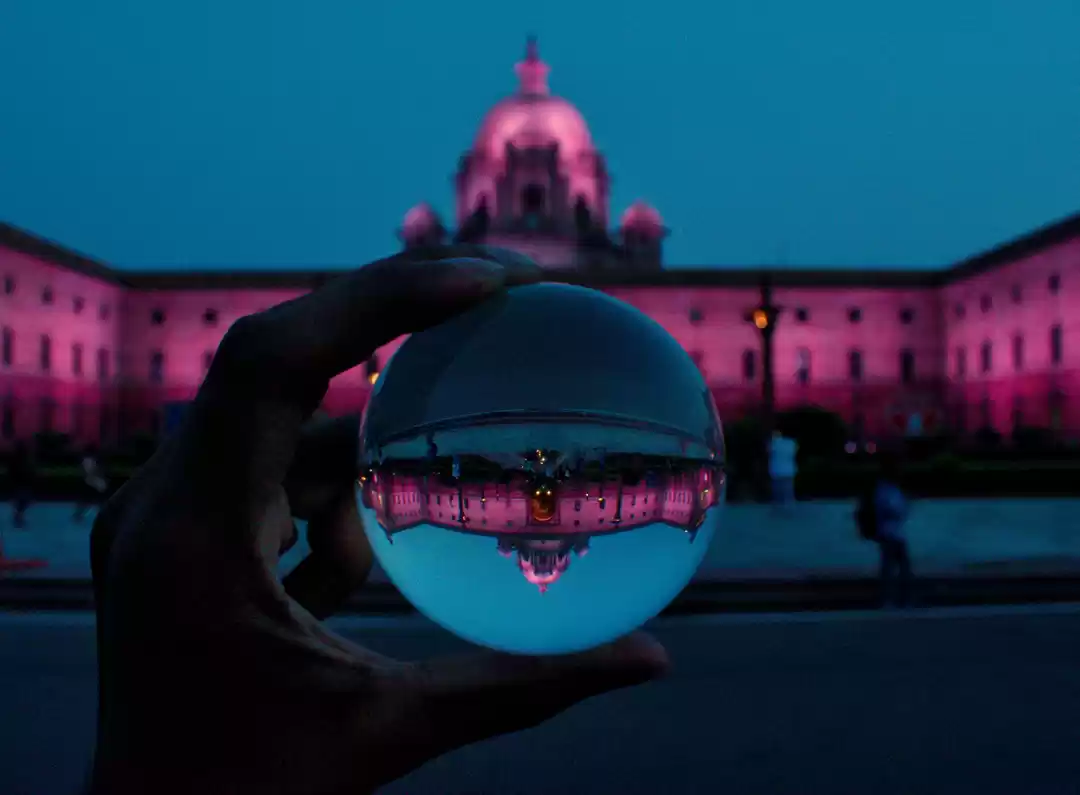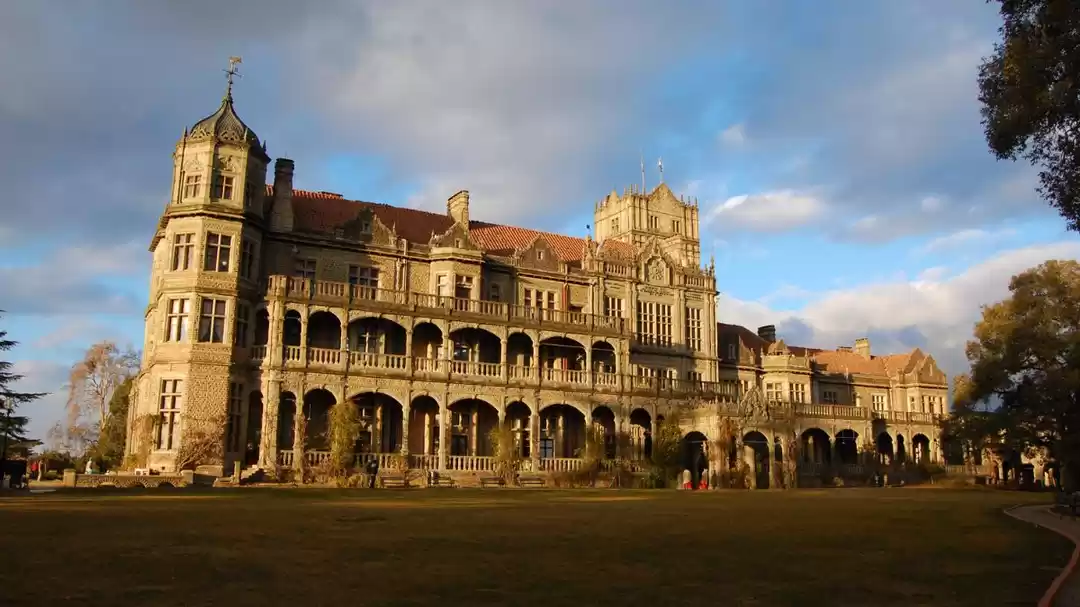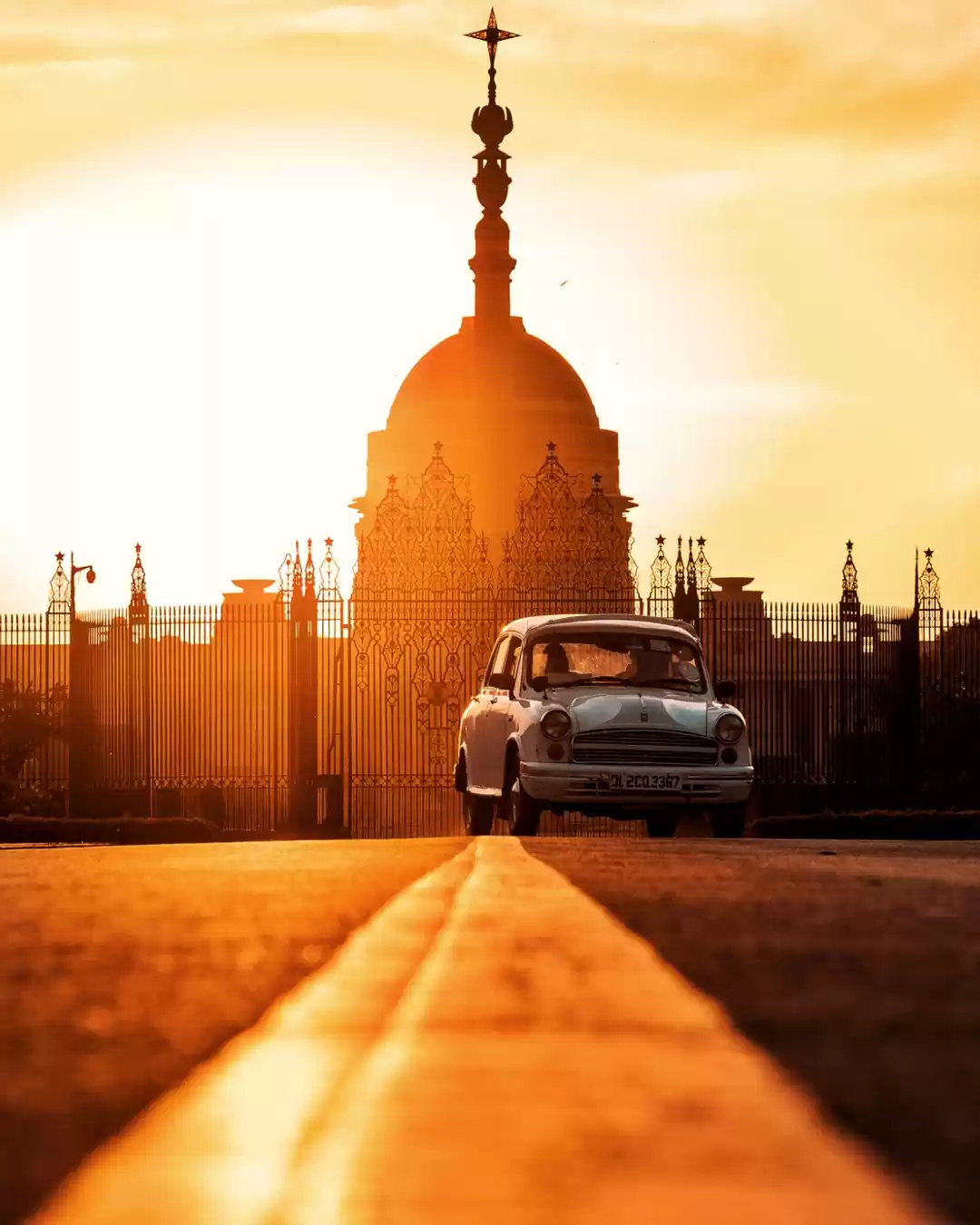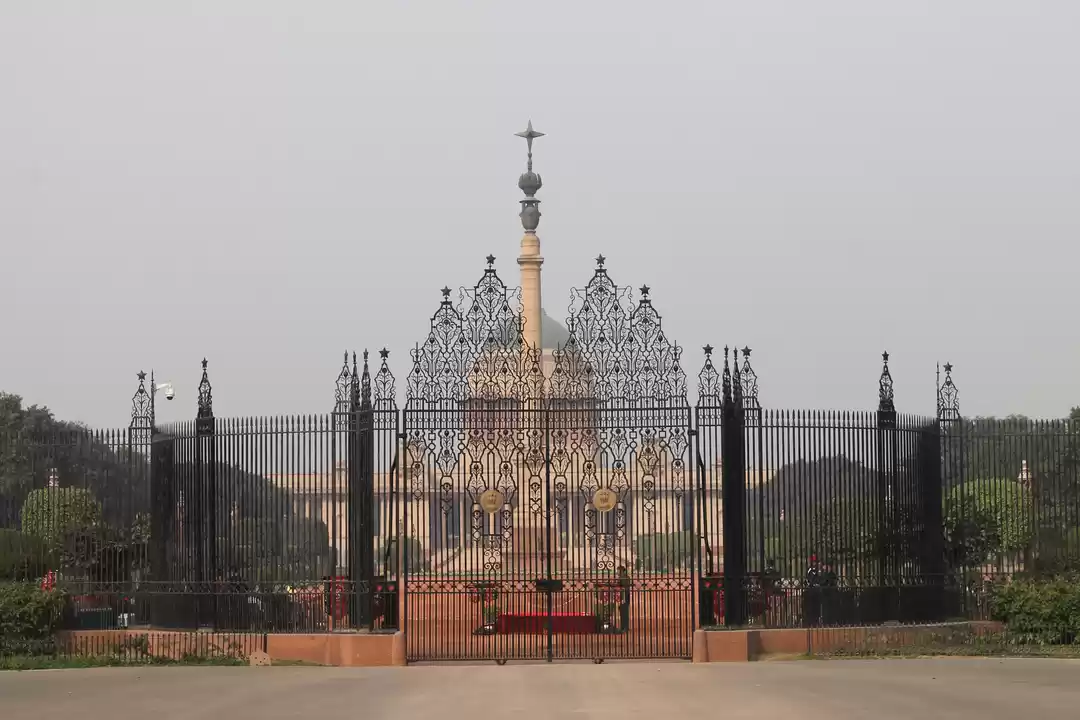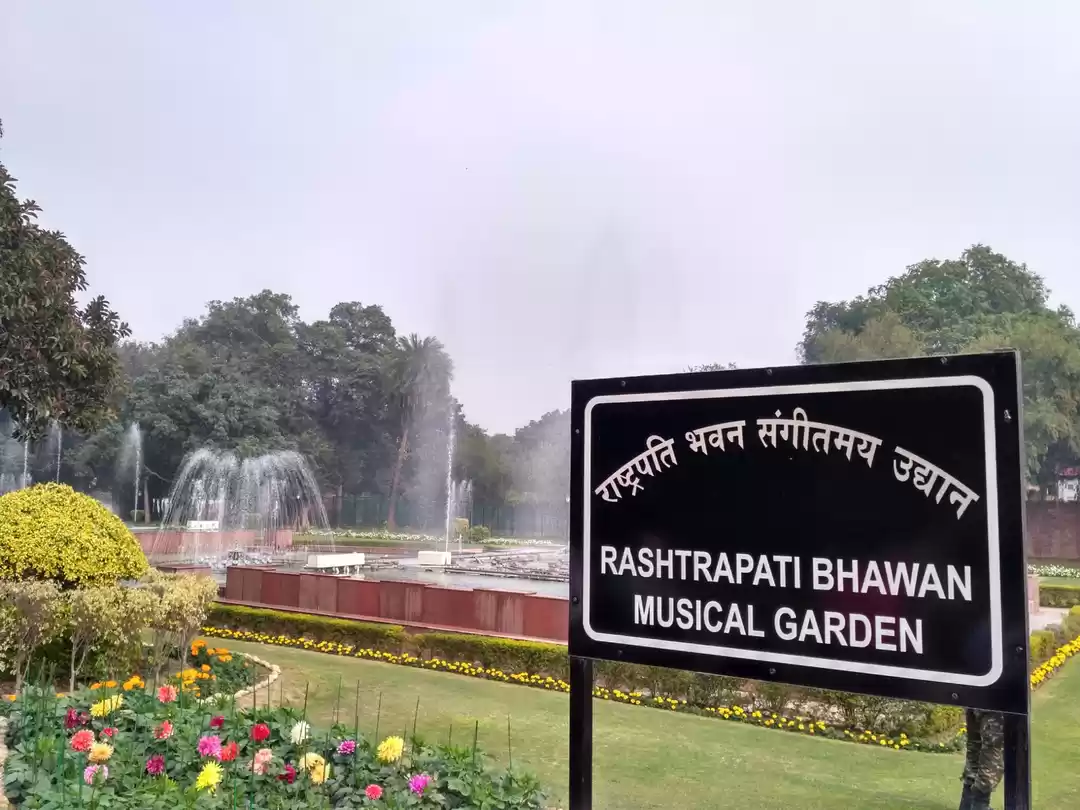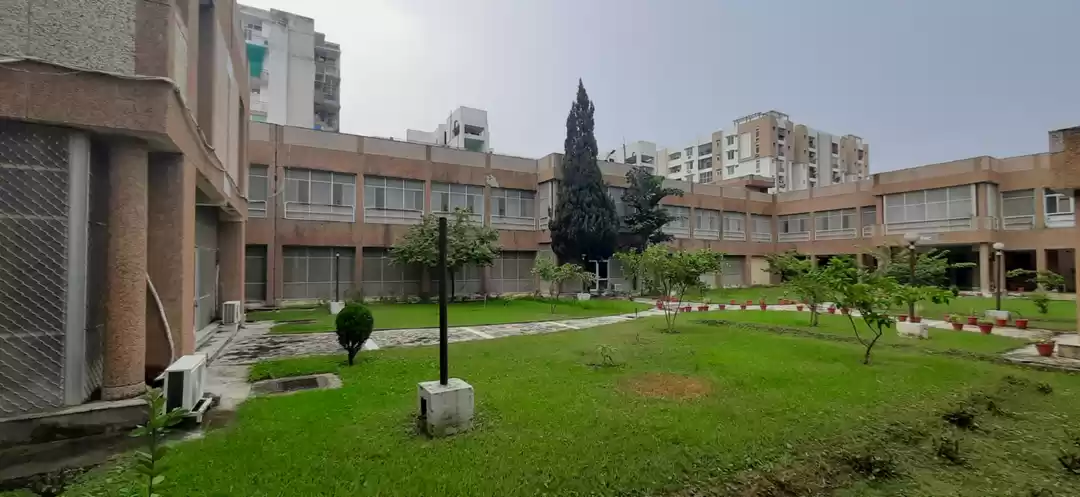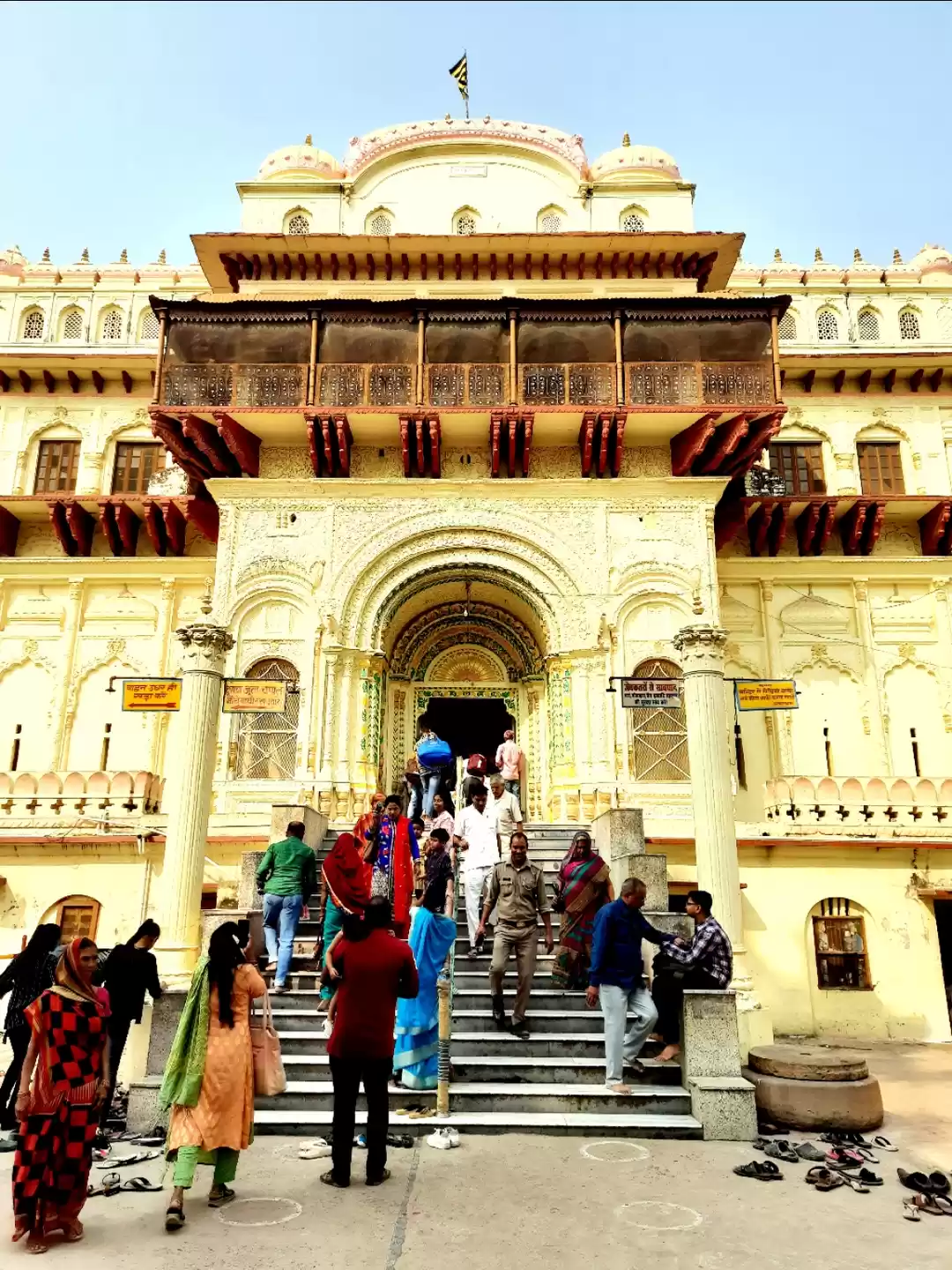Rashtrapati Bhavan in New Delhi is the official residence of the President of India, making it a significant symbol of the country's democratic governance. Its architecture represents a blend of Indian and Western styles and reflecting the grandeur of the British colonial era.
Rashtrapati Bhavan offers guided tours that provide insights into its history, architecture, and the role it plays in India's governance. The tour allows visitors to explore the main building, including the Durbar Hall, Ashoka Hall, and other significant rooms, showcasing the rich heritage of the country.
History Of Rashtrapati Bhavan
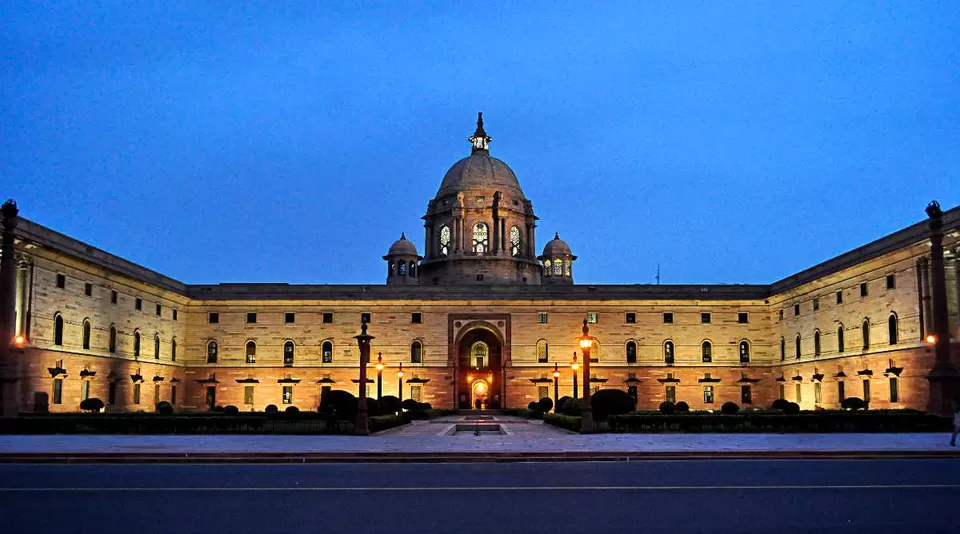
- Rashtrapati Bhavan means "President's House" in Hindi and serves as the official residence and workplace of the President of India.
- Spreads over 320 acres, comprising four floors and 340 rooms, surrounded by beautiful gardens, fountains, statues, and other structures.
- Built in the early 20th century during British rule, following the announcement in 1911 to shift the capital from Calcutta to Delhi.
- The building's construction began in 1912 and was completed in 1929, taking nearly 17 years to finish, using a blend of architectural styles including Mughal, European, and Indian.
- The design of Rashtrapati Bhavan was conceptualized by British architects Sir Edwin Lutyens and Sir Herbert Baker, who envisioned it as the centerpiece of New Delhi's architectural landscape.
- Constructed using red sandstone, marble, teak wood, and copper, with features like domes, columns, chhatris, jaalis, and chajjas.
- Witnessed key events of the British Raj, including the Partition Council meetings in 1947 and the handover of power to Jawaharlal Nehru.
- Became the residence of the Governor-General of India until 1950, when it was renamed Rashtrapati Bhavan and became the President's residence.
- Rashtrapati Bhavan has been the home of 14 Presidents of India, hosting foreign dignitaries, ceremonies, and celebrations marking India's democracy and development.
Customize your New Delhi Tour with New Delhi Tour Package with Tripoto
Architecture & Design Of Rashtrapati Bhavan
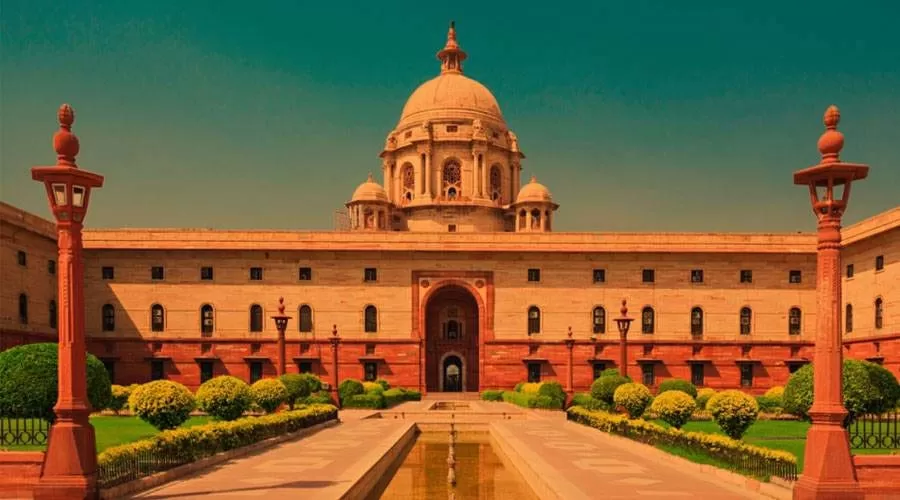
Size and Structure: Rashtrapati Bhavan is one of the largest buildings globally, boasting a floor area of 200,000 square feet and standing at a height of 145 feet.
It comprises four wings: the main wing (housing the President's residence and office), the guest wing (for accommodating foreign dignitaries), the staff wing (for staff quarters), and the ceremonial wing (for official functions).
Architectural Features: The building has a rectangular shape with a prominent central dome, inspired by the Sanchi Stupa in Madhya Pradesh.
The dome has a diameter of 75 feet and a height of 60 feet, featuring four chhatris (small domes) at its corners and a bronze statue of Buddha at its peak. The dome rests on a circular drum with 24 columns and windows for natural light.
Must Read: Best historical places in India for the history lovers
Inside Rashtrapati Bhavan

Durbar Hall: The hall below the dome, known as the Durbar Hall or Throne Room, is a significant space where the President takes the oath of office, addresses the nation, and confers honors.
It has a circular shape, a high ceiling adorned with paintings and motifs, and a red sandstone throne flanked by elephant statues symbolizing power and wisdom.
Ashoka Hall: Located in the guest wing, the Ashoka Hall is used for banquets and receptions for foreign guests.
It has a rectangular shape and a vaulted ceiling adorned with a painting by Abdur Rahman Chughtai depicting scenes from the life of Ashoka, the Mauryan emperor who embraced Buddhism.
Other Rooms: Rashtrapati Bhavan also houses the Banquet Hall for formal dinners, the Library for rare books and manuscripts, the Yellow Drawing Room for informal meetings, the North Drawing Room for musical concerts, and the Long Drawing Room for cultural events.
Museum Complex: Rashtrapati Bhavan features a museum complex comprising the Clock Tower, Stables, and Garages.
It displays artifacts and memorabilia related to Rashtrapati Bhavan and its occupants, including furniture, paintings, photographs, and offers interactive experiences through virtual reality and multimedia.
Must Read: 10 Places To Visit in Delhi
Mughal Gardens Of Rashtrapati Bhavan
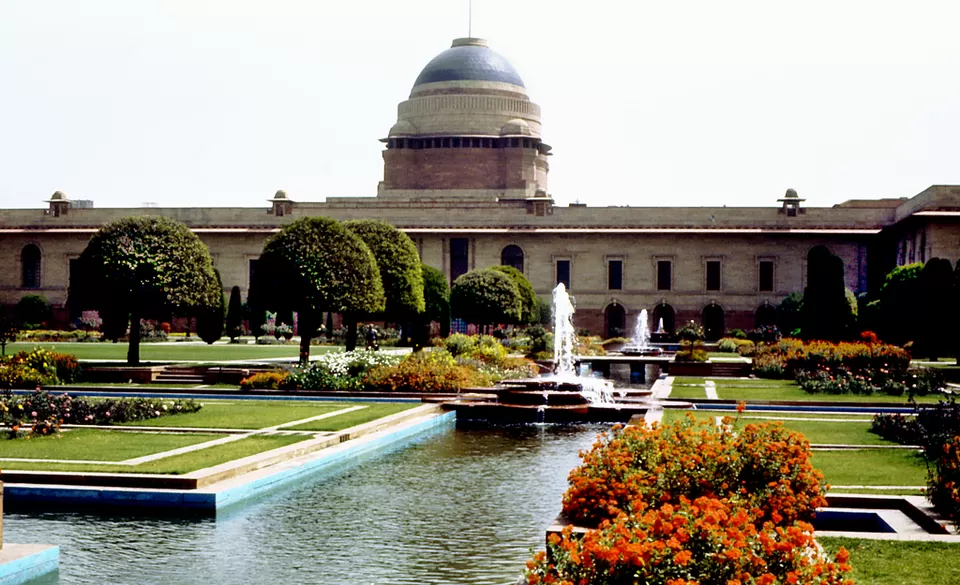
Inspiration and Layout: The gardens of Rashtrapati Bhavan, known as the Mughal Gardens, are inspired by the Persian gardens built by the Mughal emperors in India. Covering 15 acres, they consist of four parts: the Main Garden, the Terrace Garden, the Long Garden, and the Circular Garden.
Main Garden: Located behind Rashtrapati Bhavan, it is divided into four quarters by two cross-axial water channels with fountains and pools. It features a variety of seasonal flowers and exotic plants, as well as sculptures and statues.
Terrace Garden: Positioned at a higher level and connected to the Main Garden by steps, it has a rectangular shape with flower beds along its edges and musical fountains that play tunes based on the time of day.
Long Garden: Running parallel to Rashtrapati Bhavan on one side, it has a linear shape with rows of hedges forming a boundary wall. It also includes fruit trees such as mangoes, guavas, and papayas.
Circular Garden: Located at the end of the Long Garden, it has a circular shape and features a sunken pool with lotus flowers and water lilies. It also includes herbaceous plants like tulips and daffodils.
Udyanotsav: The Mughal Gardens are open to the public annually during February-March, known as Udyanotsav or Garden Festival. During this time, when most flowers are in full bloom, the gardens attract thousands of visitors who come to admire their beauty and fragrance.
Special Events: The Mughal Gardens also host various special events and occasions, including cultural programs and yoga sessions, adding to their charm and appeal.
Also check out: Lesser known Monuments in Delhi You Must Visit
Changing Of The Guard Ceremony In Rashtrapati Bhavan
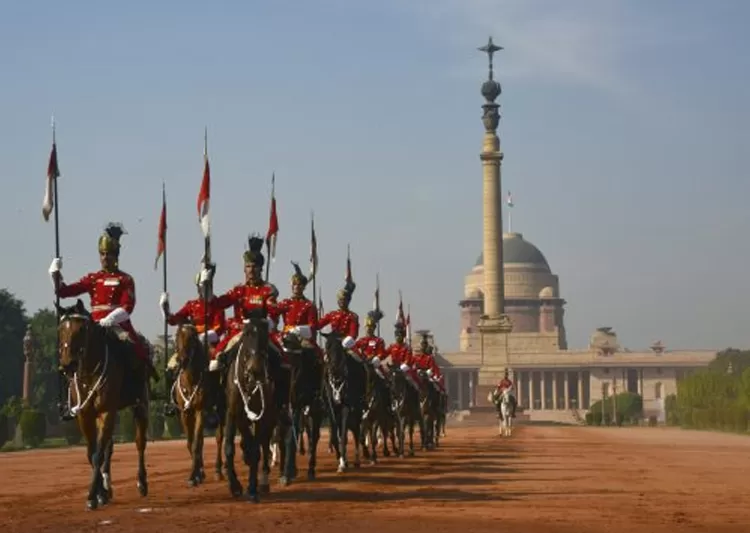
- The Changing of the Guard Ceremony at Rashtrapati Bhavan is a ceremonial tradition held every Saturday and Sunday.
- It showcases the discipline and precision of the Indian military.
- The ceremony features outgoing guards marching in colorful uniforms to military music.
- The ceremony includes various drills and movements by the guards, demonstrating their skill and coordination.
- The highlight is the handing over of the keys to the gates of Rashtrapati Bhavan from the old to the new guards, symbolizing the change of responsibility.
Nearby Attractions To Visit Around Rashtrapati Bhavan
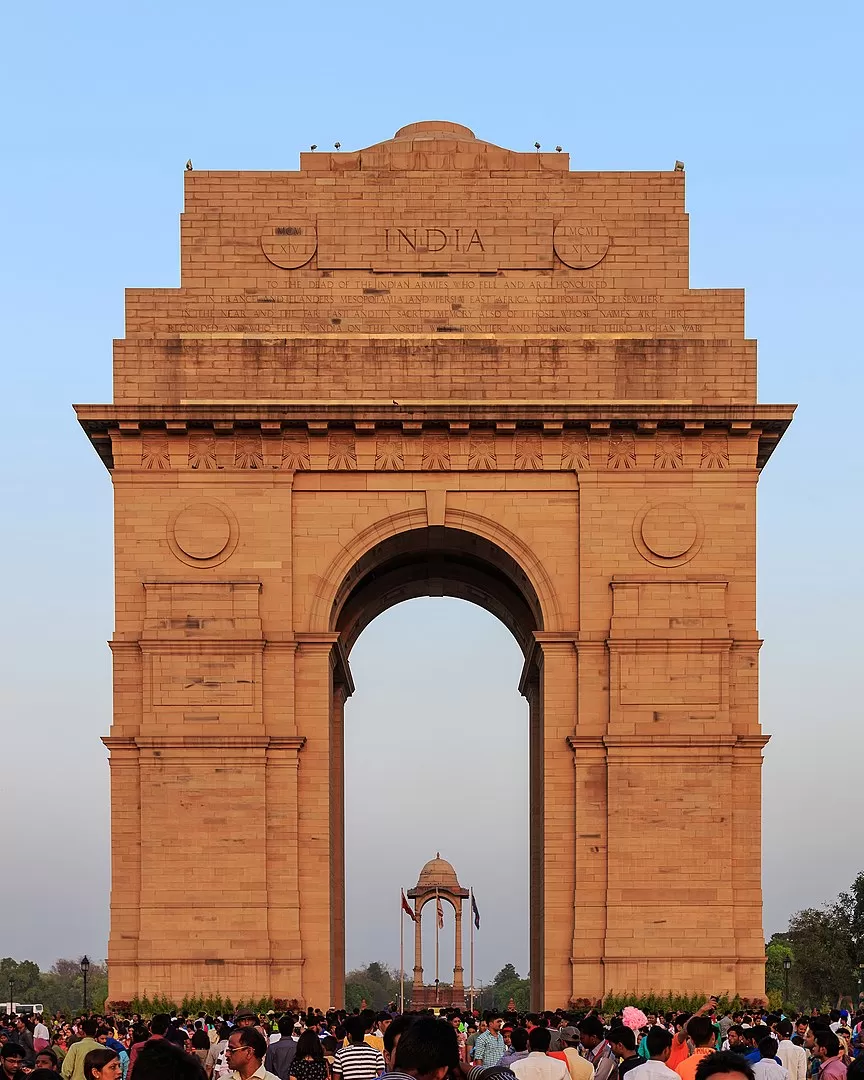
India Gate: (2.5 kilometers) - India Gate is a war memorial located at the eastern end of Rajpath. It commemorates the soldiers of the Indian Army who lost their lives in various wars. The area around India Gate is also a popular spot for picnics and evening strolls.
National Museum: (3 kilometers) - The National Museum is one of the largest museums in India, housing a vast collection of artifacts and artworks from different periods of Indian history. It offers a comprehensive insight into the rich cultural heritage of the country.
Parliament House: (2 kilometers) - The Parliament House is the seat of the Indian Parliament and is renowned for its impressive architecture. Visitors can take guided tours to learn about the functioning of the Indian Parliament and its history.
Jantar Mantar: (2 kilometers) - Jantar Mantar is an astronomical observatory built in the 18th century by Maharaja Jai Singh II of Jaipur. It consists of several architectural astronomical instruments and is a UNESCO World Heritage Site.
Gurudwara Bangla Sahib: (3 kilometers) - Gurudwara Bangla Sahib is one of the most prominent Sikh gurdwaras in Delhi. It is known for its stunning architecture and its serene environment, offering visitors a peaceful retreat from the bustling city.
Must Read: Planning to explore India? Visit these Tourist Places in India
Visiting Hours & Entry Fees For Rashtrapati Bhavan
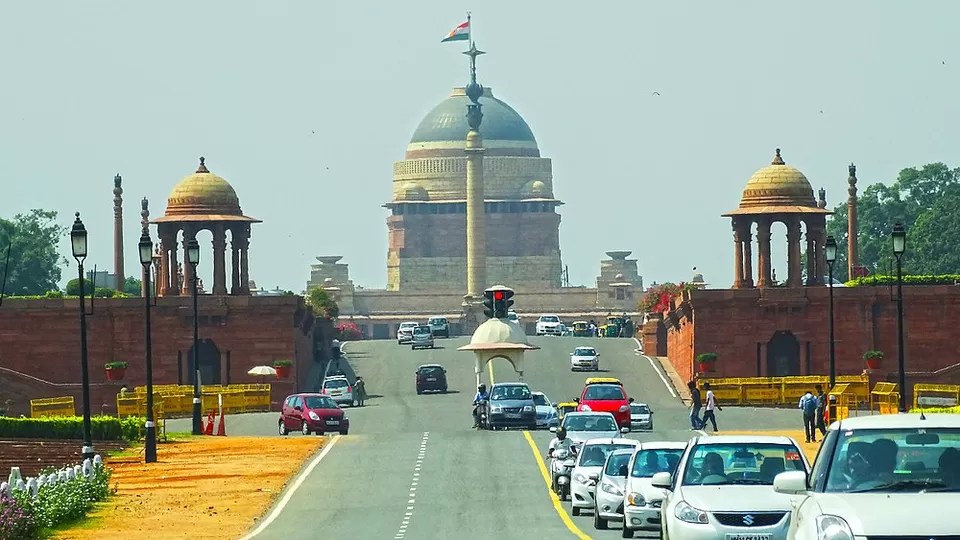
Visiting Hours:
- Rashtrapati Bhavan is open for public visits from Tuesday to Sunday.
- The timings are from 9:00 AM to 4:00 PM.
- The Bhavan remains closed on Mondays and government holidays.
Entry Fees:
- For visiting the main building and the gardens, the entry fee is Rs. 50 per person.
- There is no entry fee for children below the age of 8 years.
- The entry fee for children between 8 to 12 years of age is Rs. 25 per child.
How To Book A Visit To Rashtrapati Bhavan
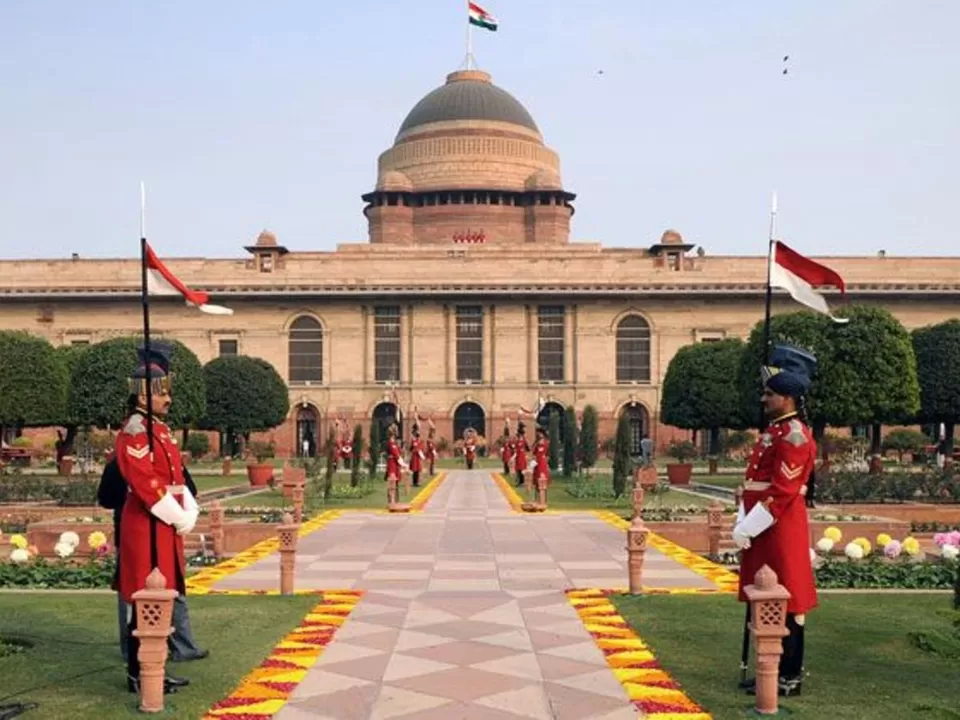
Online Booking:
- Register on the official website or visit the reception office at Gate No. 2 of Rashtrapati Bhavan.
- Fill in personal details & pay the entry fee online.
- Receive a confirmation email or SMS with your booking reference number and QR code.
On the Day of Visit:
- Print or download your booking confirmation and carry it along with your original identity proof.
- Report at the reception office at least half an hour before your scheduled time.
- Scan your QR code at the entry gate & receive an audio guide device for information and commentary.
After the Visit:
- Return the audio guide device at the exit gate.
How To Reach Rashtrapati Bhavan

By Metro:
- The nearest metro station to Rashtrapati Bhavan is Central Secretariat on the Yellow Line.
- From Central Secretariat, Rashtrapati Bhavan is a short walk or a quick taxi ride away.
By Bus:
- Delhi Transport Corporation (DTC) buses and local buses ply to Rashtrapati Bhavan from various parts of Delhi.
- Visitors can use bus services to reach nearby bus stops and then walk to Rashtrapati Bhavan.
By Car/Taxi:
- Private cars and taxis can reach Rashtrapati Bhavan via Rajpath, which is well-connected to major roads in Delhi.
- Parking facilities are available near Rashtrapati Bhavan for visitors traveling by car.
Must Read: Mughal Gardens of India You Should Visit
Facts On Rashtrapati Bhavan
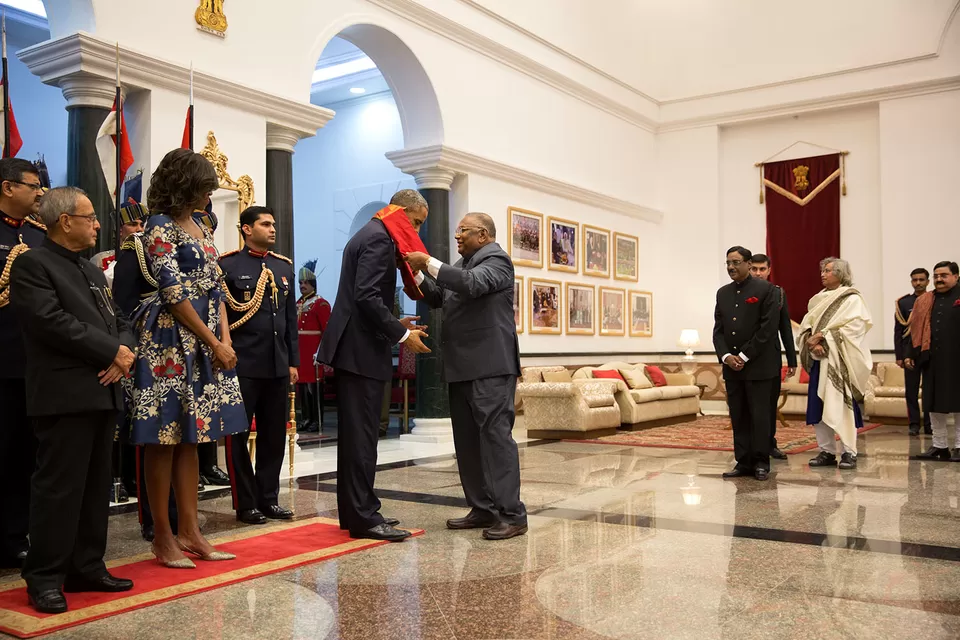
- It is the largest residence of any head of state in the world.
- It has a total of 227 columns, 35 loggias, and 37 fountains.
- It has a total of 19 state rooms, each with a different theme and decor.
- It has a total of 31 lifts and 37 staircases.
- It has a total of 1,000 lights that illuminate it at night.
- It has a total of 418 clocks that are synchronized by a master clock.
- It has a total of 2,500 staff members who work in various departments and sections.






